[안심]10 Websites To Help You Learn To Be An Expert In Psychiatric Assessmen…
31
2023.01.14 05:44
짧은주소
본문
Psychiatry Assessment and Treatment
Psychiatry Assessment is the method of diagnosing a patient suffering from mental illness. The process employs several methods. This includes the use of diagnostic instruments and the psycho-social characteristics of a patient. Safety aspects of the process will also be addressed.
Diagnostic instruments
Diagnostic instruments for psychiatric disorders can offer a uniform method to determine the severity of symptoms. They can also be used to aid in identifying diagnoses that are closely related. It is important to choose the right instrument for your patients to plan treatment.
There are many kinds of assessment. These include informal, formal, and therapist-administered. They all aim to gather relevant information about the patient.
A mental health examination is a type of mental health assessment. It involves an in-depth interview that focuses on cognition and mood and speech, emotional state, and speech. This test is used to monitor the client's development and to evaluate their thought process.
Another kind of assessment is a narrowed questionnaire, which includes a limited number of self-report items. It can be used to judge nursing admissions as well as to aid in nursing intake.
Diagnostic rating scales are often used as an aid to the diagnostic interview. They can be used to evaluate the progress of treatment. Ideally they should provide a an accurate measurement of the desired outcome across different test conditions and different evaluaters. The results of such scales should be comparable to the gold standard.
There are currently several diagnostic tools that can be used to assess mental disorders. They include the Diagnostic and Statistical Manual of Mental Disorders (DSM), the MMPI-2, and the Kiddie Schedule for Affective Disorders and Schizophrenia. A number of others are under development.
In addition to these diagnostic instruments that are general-purpose there are broadband instruments that are designed to measure multiple problems simultaneously. Broadband instruments are especially useful for detecting comorbid conditions.
Assessment of mental health can be challenging for adolescents and children. Children and adolescents may face difficulties evaluating mood symptoms.
The most frequently used tests are the DSM-5 and the MMPI-2. These tests can be used to determine a likely diagnosis of schizophrenia or major affective disorder. Despite their widespread use, they do not always provide an exhaustive and thorough examination of the underlying causes behind symptoms.
Every few years, psychiatric assessment east sussex diagnostic tools for psychiatric disorders are reviewed. For instance the DSM-5 is currently being updated.
Psycho-social aspects of the patient
Aside from the obvious physical and psychological symptoms, the psycho-social aspects of the patient need to be assessed. Psychosocial distress is often related to a health condition, like a traumatic illness, and is strongly connected to the progression of a disease. The psychological well-being of a person can have a positive effect on the condition.
The Psychosocial Impact Index is a good starting point to evaluate the various aspects of a person's life. This assessment tool is a blend of a number of validated scales. It has been utilized in different clinical settings. In one study, it was used to screen patients for psychosocial factors in a psychoneuroendocrinology clinic.
PSI has many subscales. Each can be evaluated using a 5-point Likert scale. Scores can be used to guide the treatment process and are also correlative to scales that have been validated. The Stress Profile is one of the most important subscales. It evaluates psychosocial aspects in a dimension.
Utilizing PSI Clinicians can better know the stress levels of a patient and how they affect the quality of his or her life. A multidisciplinary team can identify the psycho-social aspects of a person's life and suggest appropriate treatment.
The PSI was first envisioned as an easy tool for screening stress. However, it has since been updated to include items suitable for adolescents and young adults. Furthermore the PSI has also been used to assess the efficacy of different interventions and has been shown to be an effective method to determine the need for additional psychological assessments.
PSI scores, like all statistical tools, are constrained by the sample size. This limitation on generalization is a drawback. However, it is the most comprehensive and efficient method to assess the psychosocial aspects of a patient's health.
Apart from the PSI In addition to the PSI, there are other tests and measures that could be used to evaluate a patient's mental and social health. One of them is the Illness Attitude Scales, a clinimetric index developed by Sirri L and Grandi. The Mini International Neuropsychiatric Schedule Plus is another example. This brief structured diagnostic interview is able to be administered to patients in as little as 20-30 minutes.
Safety considerations
Safety is an essential aspect of the psychiatric assessment. Safety is important not only for the patient, but also for the staff. Safety can be defined as the prevention of harm. In the psychiatric institutions, it is crucial to develop strategies to increase the safety of patients.
One way to measure the effectiveness of a certain strategy is to evaluate the impact it has on the quality of care. The quality of care can be affected by many variables including the experience and qualifications of the staff. Additionally the structure of an institution plays a significant role in preventing negative incidents.
A review of the literature shows that a lot of risk management techniques are either ineffective or not well implemented. These practices can lead to an inhumane or restrictive environment. They can do more harm than good if the primary requirement is not met - an environment that is safe for patients can enjoy.
One way to increase patient safety is to raise awareness of the dangers. To achieve this, a good first step is to identify the possible risks, as well as their corresponding solutions. By educating healthcare providers on the unique characteristics of mental health, it's likely that the dangers will be recognized and reduced.
There are many aspects that affect the quality of care offered in the area of assessment of psychiatric disorders. For instance, a lack of communication is a major contributor to mistakes.
Another method to increase patient security is to increase the number of staff. Staff size can vary depending on many factors. It is best to assign patients and nurses with less experience.
The organizational structure of a psychiatric assessment east sussex hospital plays a crucial role in protecting patients. This is a relatively new concept however there are many methods that can lower the chance of adverse outcomes.
This article will go over some of the most crucial and pertinent safety precautions. These include the use of ligatures and replacing dangerous materials in facilities.
The psychiatric industry's focus on safety should be rethought. Instead of focusing on safety as the primary objective of psychiatric care, the concept of safety should be utilized in tandem with other care methods.
COVID-19 is a psychotic pandemic
The COVID-19 virus had significant effects on mental health professionals across the globe. It has had a significant effect on the counseling and psychiatric services, particularly in the emergency department. Psychiatric patients have been found to be more agitated and have frequent recurrences of conditions that are preexisting.
COVID-19 has also created a brand new normal of heightened apprehension and anger. In some cases patients may not receive the treatment they need. An increasing number of emergency rooms in the community are seeing more patients with psychiatric disorders than they did prior to the outbreak.
Although the consequences of the COVID-19 virus have not been extensively studied, studies conducted in the past have revealed that it has a significant psychological impact. Patients suffering from SARS-CoV-2 are more likely to be suicidal or suffer from depression. Moreover, there are also reports of an increase in anxiety and depression among the general population.
The COVID-19 virus has created new stressors for health care providers and has prompted innovative approaches to psychiatric health. SARS-CoV-2 risk management training has been put in place in some hospitals. Digital interventions are also utilized, including videoconferencing to monitor and interact with patients.
One study showed that people who have had training in COVID-19 were less likely to worry about contracting the disease. Another study found that while the disease has affected the quality of education in the region and local areas, it has not affected the quality of education.
A third study revealed that people with a history or psychiatric illness are more likely to experience depression and anxiety during the pandemic. This could be due in part to the restrictions placed by the government on social and economic activities. There are questions regarding the effects of the extended exposure to the pandemic.
These findings suggest that further research is required to discover how to anticipate and reduce the risk of mental health issues in the future. This will enable us to better assist patients with psychiatric problems during pandemics.
There are currently only a few studies that examine the effects of COVID-19 pandemic within the ED setting. Further research is necessary to determine how to improve the overall care for psychiatric patients during a pandemic.
Psychiatry Assessment is the method of diagnosing a patient suffering from mental illness. The process employs several methods. This includes the use of diagnostic instruments and the psycho-social characteristics of a patient. Safety aspects of the process will also be addressed.
Diagnostic instruments
Diagnostic instruments for psychiatric disorders can offer a uniform method to determine the severity of symptoms. They can also be used to aid in identifying diagnoses that are closely related. It is important to choose the right instrument for your patients to plan treatment.
There are many kinds of assessment. These include informal, formal, and therapist-administered. They all aim to gather relevant information about the patient.
A mental health examination is a type of mental health assessment. It involves an in-depth interview that focuses on cognition and mood and speech, emotional state, and speech. This test is used to monitor the client's development and to evaluate their thought process.
Another kind of assessment is a narrowed questionnaire, which includes a limited number of self-report items. It can be used to judge nursing admissions as well as to aid in nursing intake.
Diagnostic rating scales are often used as an aid to the diagnostic interview. They can be used to evaluate the progress of treatment. Ideally they should provide a an accurate measurement of the desired outcome across different test conditions and different evaluaters. The results of such scales should be comparable to the gold standard.
There are currently several diagnostic tools that can be used to assess mental disorders. They include the Diagnostic and Statistical Manual of Mental Disorders (DSM), the MMPI-2, and the Kiddie Schedule for Affective Disorders and Schizophrenia. A number of others are under development.
In addition to these diagnostic instruments that are general-purpose there are broadband instruments that are designed to measure multiple problems simultaneously. Broadband instruments are especially useful for detecting comorbid conditions.
Assessment of mental health can be challenging for adolescents and children. Children and adolescents may face difficulties evaluating mood symptoms.
The most frequently used tests are the DSM-5 and the MMPI-2. These tests can be used to determine a likely diagnosis of schizophrenia or major affective disorder. Despite their widespread use, they do not always provide an exhaustive and thorough examination of the underlying causes behind symptoms.
Every few years, psychiatric assessment east sussex diagnostic tools for psychiatric disorders are reviewed. For instance the DSM-5 is currently being updated.
Psycho-social aspects of the patient
Aside from the obvious physical and psychological symptoms, the psycho-social aspects of the patient need to be assessed. Psychosocial distress is often related to a health condition, like a traumatic illness, and is strongly connected to the progression of a disease. The psychological well-being of a person can have a positive effect on the condition.
The Psychosocial Impact Index is a good starting point to evaluate the various aspects of a person's life. This assessment tool is a blend of a number of validated scales. It has been utilized in different clinical settings. In one study, it was used to screen patients for psychosocial factors in a psychoneuroendocrinology clinic.
PSI has many subscales. Each can be evaluated using a 5-point Likert scale. Scores can be used to guide the treatment process and are also correlative to scales that have been validated. The Stress Profile is one of the most important subscales. It evaluates psychosocial aspects in a dimension.
Utilizing PSI Clinicians can better know the stress levels of a patient and how they affect the quality of his or her life. A multidisciplinary team can identify the psycho-social aspects of a person's life and suggest appropriate treatment.
The PSI was first envisioned as an easy tool for screening stress. However, it has since been updated to include items suitable for adolescents and young adults. Furthermore the PSI has also been used to assess the efficacy of different interventions and has been shown to be an effective method to determine the need for additional psychological assessments.
PSI scores, like all statistical tools, are constrained by the sample size. This limitation on generalization is a drawback. However, it is the most comprehensive and efficient method to assess the psychosocial aspects of a patient's health.
Apart from the PSI In addition to the PSI, there are other tests and measures that could be used to evaluate a patient's mental and social health. One of them is the Illness Attitude Scales, a clinimetric index developed by Sirri L and Grandi. The Mini International Neuropsychiatric Schedule Plus is another example. This brief structured diagnostic interview is able to be administered to patients in as little as 20-30 minutes.
Safety considerations
Safety is an essential aspect of the psychiatric assessment. Safety is important not only for the patient, but also for the staff. Safety can be defined as the prevention of harm. In the psychiatric institutions, it is crucial to develop strategies to increase the safety of patients.
One way to measure the effectiveness of a certain strategy is to evaluate the impact it has on the quality of care. The quality of care can be affected by many variables including the experience and qualifications of the staff. Additionally the structure of an institution plays a significant role in preventing negative incidents.
A review of the literature shows that a lot of risk management techniques are either ineffective or not well implemented. These practices can lead to an inhumane or restrictive environment. They can do more harm than good if the primary requirement is not met - an environment that is safe for patients can enjoy.
One way to increase patient safety is to raise awareness of the dangers. To achieve this, a good first step is to identify the possible risks, as well as their corresponding solutions. By educating healthcare providers on the unique characteristics of mental health, it's likely that the dangers will be recognized and reduced.
There are many aspects that affect the quality of care offered in the area of assessment of psychiatric disorders. For instance, a lack of communication is a major contributor to mistakes.
Another method to increase patient security is to increase the number of staff. Staff size can vary depending on many factors. It is best to assign patients and nurses with less experience.
The organizational structure of a psychiatric assessment east sussex hospital plays a crucial role in protecting patients. This is a relatively new concept however there are many methods that can lower the chance of adverse outcomes.
This article will go over some of the most crucial and pertinent safety precautions. These include the use of ligatures and replacing dangerous materials in facilities.
The psychiatric industry's focus on safety should be rethought. Instead of focusing on safety as the primary objective of psychiatric care, the concept of safety should be utilized in tandem with other care methods.
COVID-19 is a psychotic pandemic
The COVID-19 virus had significant effects on mental health professionals across the globe. It has had a significant effect on the counseling and psychiatric services, particularly in the emergency department. Psychiatric patients have been found to be more agitated and have frequent recurrences of conditions that are preexisting.
COVID-19 has also created a brand new normal of heightened apprehension and anger. In some cases patients may not receive the treatment they need. An increasing number of emergency rooms in the community are seeing more patients with psychiatric disorders than they did prior to the outbreak.
Although the consequences of the COVID-19 virus have not been extensively studied, studies conducted in the past have revealed that it has a significant psychological impact. Patients suffering from SARS-CoV-2 are more likely to be suicidal or suffer from depression. Moreover, there are also reports of an increase in anxiety and depression among the general population.
The COVID-19 virus has created new stressors for health care providers and has prompted innovative approaches to psychiatric health. SARS-CoV-2 risk management training has been put in place in some hospitals. Digital interventions are also utilized, including videoconferencing to monitor and interact with patients.
One study showed that people who have had training in COVID-19 were less likely to worry about contracting the disease. Another study found that while the disease has affected the quality of education in the region and local areas, it has not affected the quality of education.
A third study revealed that people with a history or psychiatric illness are more likely to experience depression and anxiety during the pandemic. This could be due in part to the restrictions placed by the government on social and economic activities. There are questions regarding the effects of the extended exposure to the pandemic.
These findings suggest that further research is required to discover how to anticipate and reduce the risk of mental health issues in the future. This will enable us to better assist patients with psychiatric problems during pandemics.
There are currently only a few studies that examine the effects of COVID-19 pandemic within the ED setting. Further research is necessary to determine how to improve the overall care for psychiatric patients during a pandemic.






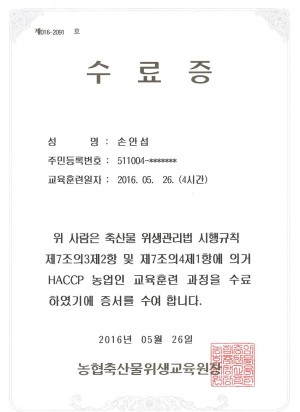
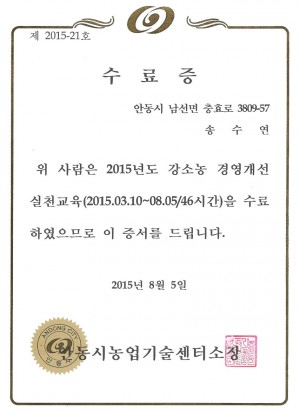

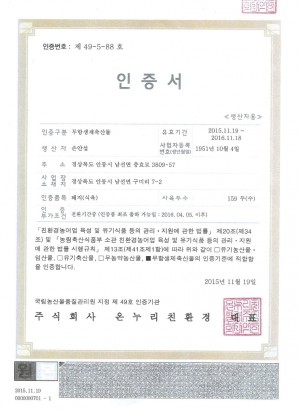
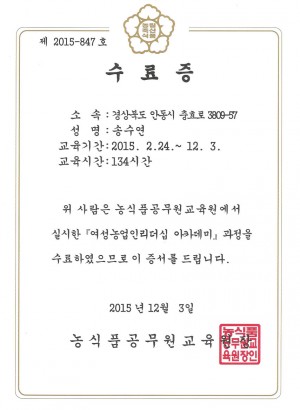
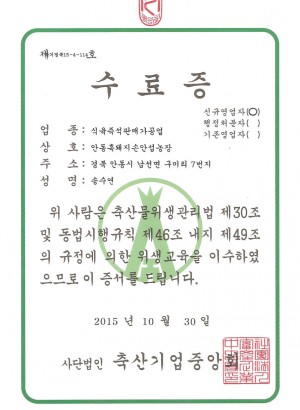

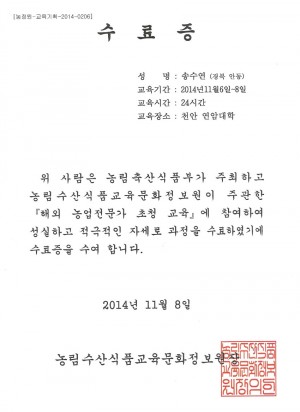

댓글목록
등록된 댓글이 없습니다.